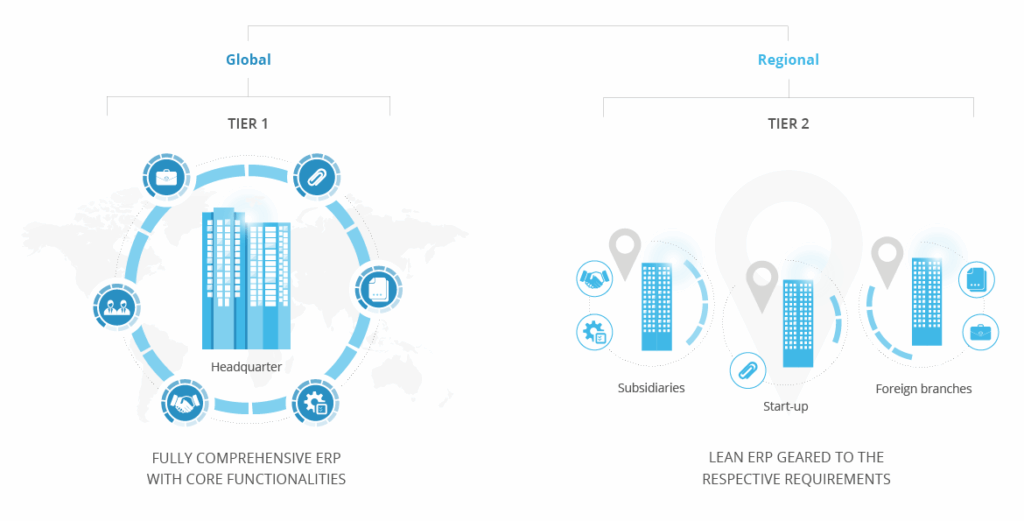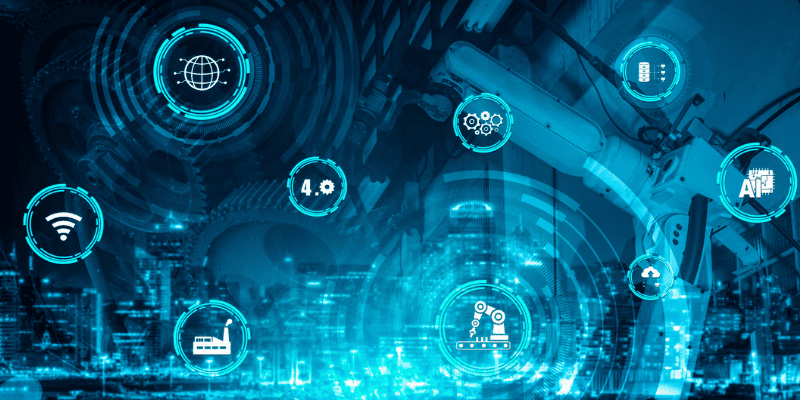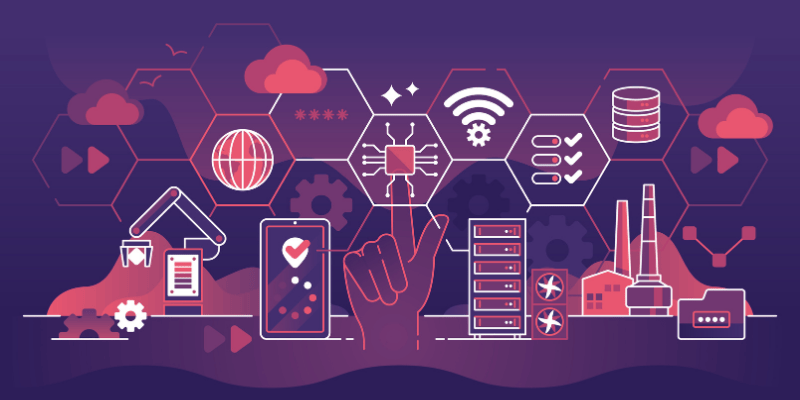In today’s complex business landscape, enterprise resource planning (ERP) systems play a crucial role in connecting processes, improving visibility, and driving efficiency across organizations. But when it comes to managing both large-scale headquarters and smaller subsidiaries, a one-size-fits-all approach isn’t always practical. This is where a two-tier ERP strategy comes into play—offering companies the flexibility to maintain a robust Tier 1 ERP system at the corporate level while implementing a more agile, cost-effective Tier 2 ERP system for subsidiaries or specific business units. In this blog, we’ll explore what sets Tier 1 and Tier 2 ERP systems apart, the advantages of a two-tier architecture, and which organizations stand to benefit most from this approach.
Tier 1 ERP System
Implementing a single ERP system for an entire organization and their subsidiaries.
This is individually tailored to the often complex and comprehensive requirements of the company’s main operation, which usually far exceeds the scope required by smaller subsidiaries and sales offices.
Tier 2 ERP System
A two-tier ERP strategy describes the use of two different ERP systems for different business units within a corporate organization.
If a manufacturing company decides to implement a separate ERP application for its headquarters and another one for its subsidiaries, this is referred to as a Two-Tier ERP system. It can be deployed at different levels within an organization and can also be used for different industries.

Advantages of a two-tier architecture
- Time and cost savings
- Little customization – new features can be adapted much more easily
- Greater flexibility and control
- Reduced complexity and resource-efficient
- Adhering to latest compliance guidelines – as it can be easily updated
Who can benefit from a two-tier ERP strategy?
- Organizations with smaller, less complex subsidiaries and/or international companies that operate in a different industry than the corporate head office and need enterprise resource planning software that is tailored to their individual needs
- New companies that have become part of the organization through a merger, an acquisition, or a similar transaction
- Organizations that want to take advantage of a two-tier architecture, while still having the existing Tier 1 system available for certain business functions or processes
- Companies that want to modernize, but at the same time remain true to their current system landscape
- Organizations that want to combine the benefits of an on-premise and cloud-based ERP system and deploy it at different tiers within their organization
Choosing the right ERP strategy can make all the difference in how efficiently your organization operates across multiple locations and business units. A two-tier ERP approach offers the best of both worlds—maintaining the strength of a centralized system while empowering subsidiaries with the flexibility they need to succeed. By aligning technology with each unit’s unique requirements, companies can drive efficiency, reduce costs, and stay agile in a constantly changing market.





